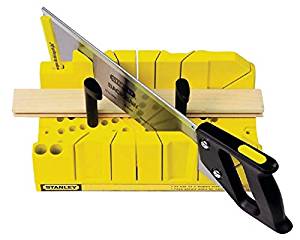Baseboards are cut using miters saws designed to cut quickly and create different angles as needed. By definition, a miter is a joint between two separate pieces of wood, or trim.
How to Use a Miter Saw
For cutting angles, most pieces can be cut by sliding the saw or rotating the head. All miter saws are different; it is best to review your manufacturer’s recommendations for your model. Learn more about miter saws, below.
What Saw to Cut Trim With
The most common miter saws are electric and use a chopping action to intersect two boards. Non-electric miter saws are known as miter boxes and can be equally as effective and significantly less expensive. More about miter saws:
The biggest differences between miter saws are the features they provide. All of them cut baseboard; however, some have additional functions like a bevel or rotation that allows for cutting different angles. These four types are most common for cutting baseboards.
Many new miter saws have additional features like lasers that are intended to help visualize the location of cuts on the board before completing the sawing action.
Finally, most experts opt to upgrade their miter saw blade. Despite miter saws being the best option for cutting baseboards, the blades they come with are often not designed for trim work. Instead, many professionals upgrade to 60-tooth blades. The higher tooth count the blade is the ideal it is for finish work, this is because higher tooth blades create a sharper, cleaner cut and limit tear-out. Before going to purchase, be sure to check the size of your blade – common sizes are 10’’ and 12’’.
Miter Box
A miter box is the pre-electric version of the miter saw. Today, it is usually purchased while packaged with a plastic box and saw. The box contains slots for common angles (e.g., 22.5, 45, and 60). While it requires more effort from the operator, the miter box is a less involved option for making quick and common cuts. Older versions included what we would now consider a hybrid of the two with a hand saw that had a sliding motion.








![Sliding Compound Mitersaw [Ridgid]](https://cdn.shopify.com/s/files/1/0091/7602/3076/files/Carousel_Image_7_Sliding_Compound_Miter_Saw_large.jpg?v=1566415738)






